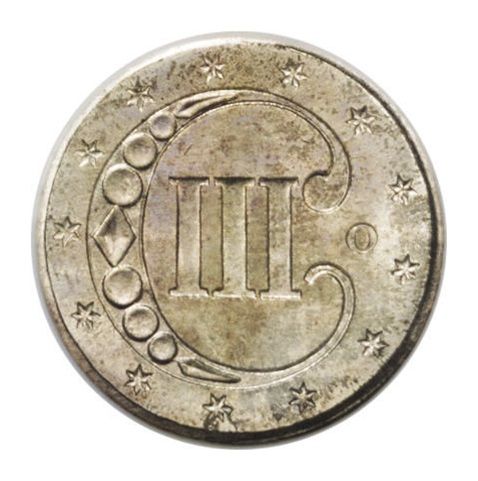Three-Cent Silver: Solving the problem of scarcity
Posted onThe US three-cent silver coin was one of the many repercussions of the California gold rush. The country experienced a surging supply of gold as new discoveries opened in the east. This development created an economic scenario in which the price of gold relative to silver dropped. Thus, silver could be traded for ever increasing amounts of gold. As a result, a shortage of silver developed in the country. This was the new setting in which the three-cent silver coins emerged.
To solve this problem of scarcity, New York Senator Daniel S. Dickinson, drafted legislation calling for a new coin. The piece would consist of .750 fine silver meaning that the composition would be three parts silver and one-part copper, making it the first American coin to contain metal valued significantly less than its face value. There were fractious debates over the legislation. However, the idea found momentum once Congress began considering dropping the postage rate from 5 cents to 3 cents. By 1851 the bill passed.
When it was time to design the piece, many considered simple images best. The reason: the coin was so small in size that it could only feature basic shapes, otherwise no one would be able to appreciate such small detail. For these reasons, it was decided that the obverse side of the coin would feature a star in reference to the national crest with the shield of the Union in the center, and the reverse side was an ornamental “C” with the Roman numeral “III” in the center. The perimeter featured a ring of thirteen stars.
Officials minted three types over the years. The bulk of the minting occurred in Philadelphia. At first, many recoiled from the uncommonly small size. Type I (1851-1853) was originally minted with 75% silver and 25% copper to discourage melting down of the coins for their silver content…and they quickly became dirty and discolored. This led to the nickname “fish scales” at the time. Type II (1854-1858) came as officials increased the portion of silver in the piece to .900. Other changes were aesthetic. The star featured a triple line around the perimeter, and an olive branch and bunch of arrows. Type III (1859-1873) included only minor changes to one side of the coin most likely to improve the striking process.
By 1870 President Ulysses S. Grant signed the Coinage Act of 1873. The direct result was the abolishment of two-cent, and three-cent pieces and other coins. This de-authorization meant that the US Treasury would need to withhold the piece they had already minted. Instead of circulating the currency they would melt the coins and use the metal for other pieces of currency.
Today, the 1851-O three cent silver remains one of the more sought-after versions of the coin because it was one of the few minted outside of Philadelphia. It is the only coin of this type struck at the New Orleans Mint. 720,000 pieces were issued. For most collectors the uncommon “O” mint mark is what makes the coin so collectable. Additionally, the coin represents an unusual period in US history in which the country was still finding its way and, in the case of the Type III coin, navigating the impending Civil War.
Want to read more articles like these? Get our tales from the vault, our favorite stories from around the world and the latest tangible assets news delivered to your inbox weekly. Sign up for our newsletter here!







